Offer letter employment template
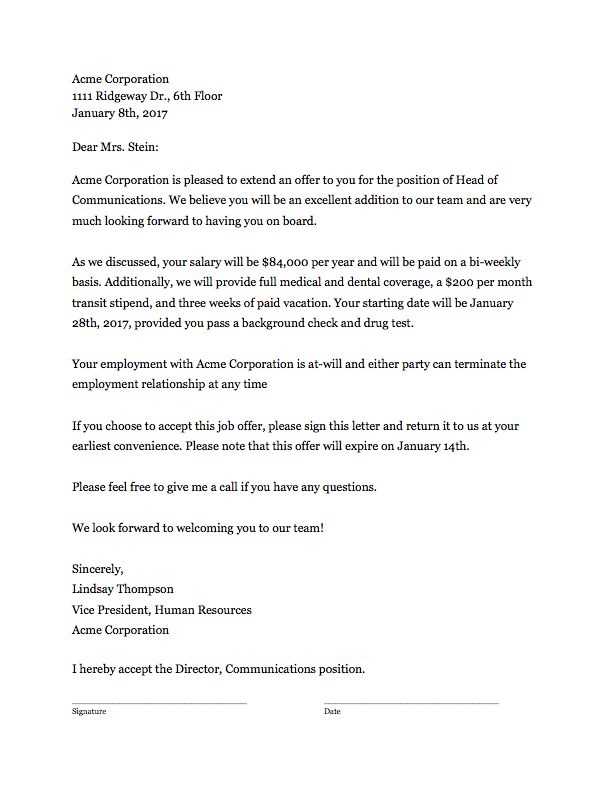
Crafting a clear and concise offer letter is a crucial step in hiring new employees. A well-structured offer letter sets the tone for the professional relationship and ensures both parties are on the same page regarding expectations. The key is to include all necessary details while maintaining a welcoming, straightforward approach.
Start by stating the position being offered, along with the basic terms of employment such as salary, start date, and work hours. Be specific with the job title and responsibilities to avoid any ambiguity later on. A transparent description will make sure that the candidate fully understands their role and how they fit into the organization.
Next, highlight the benefits package and any additional perks that come with the job. Whether it’s health insurance, retirement plans, or flexible work arrangements, these details are often what help candidates make their final decision. Make sure to outline any conditions related to these benefits, so expectations are clear from the beginning.
Finally, provide a section for the candidate to acknowledge the terms. This can be a simple line where they confirm their acceptance of the offer and the conditions attached. By ensuring this step is included, you protect both the company and the employee from potential misunderstandings down the road.
How to Format Job Title and Responsibilities in the Offer Letter?
Use a clear and specific job title. Avoid vague terms like “Manager” or “Associate.” Instead, specify the role, such as “Marketing Manager – Social Media” or “Software Engineer – Backend Development.” This eliminates confusion and sets the right expectations.
Outline responsibilities in a structured format. A concise bullet-point list works best. Keep each point focused on key duties rather than broad descriptions. For example:
- Develop and implement social media strategies to increase engagement.
- Collaborate with designers and content teams to create compelling campaigns.
- Analyze performance metrics and adjust strategies accordingly.
Ensure alignment with the job description. The responsibilities in the offer letter should match those in the job posting and internal documentation. Any discrepancies can create misunderstandings before the employee even starts.
Clarify reporting structure and key expectations. Specify who the new hire will report to and any direct reports they may have. If the role involves performance benchmarks, mention them briefly.
Keep the wording legally sound and flexible. Phrases like “including but not limited to” allow room for role adjustments while avoiding overly rigid commitments.
By structuring job titles and responsibilities with clarity and precision, you set the stage for a smooth onboarding process and a clear understanding of expectations.
What Terms and Conditions Should Be Clearly Defined in the Offer?
Define the job title and description. This provides clarity on the role and the employee’s expectations from the start. Include specific duties and responsibilities that align with the position to avoid any ambiguity later.
State the compensation package. Include the salary amount, payment frequency, and any bonuses or commissions. Make sure this section details how raises, promotions, or performance reviews will be handled, if applicable.
Outline the working hours and schedule. Specify regular work hours, breaks, and expectations regarding overtime or weekend work. This helps avoid misunderstandings about time commitments.
Clarify the duration of employment, if applicable. If the offer is for a fixed-term role or probationary period, this should be stated along with any conditions for extension or termination.
Specify benefits such as health insurance, retirement plans, and paid time off. Clearly define eligibility, waiting periods, and the process for enrollment in these programs to prevent confusion about what is provided.
Include any non-compete or confidentiality agreements. If the job involves sensitive information or intellectual property, make sure these terms are outlined, including the duration of any post-employment restrictions.
State the start date and any pre-employment conditions. If the offer is contingent on background checks, drug tests, or other verification processes, list them here to manage expectations.
Define termination terms. Include whether the position is at-will or subject to a specific notice period, along with the conditions under which either party may terminate the agreement.
How to Specify Start Date and Work Schedule in the Offer Letter?
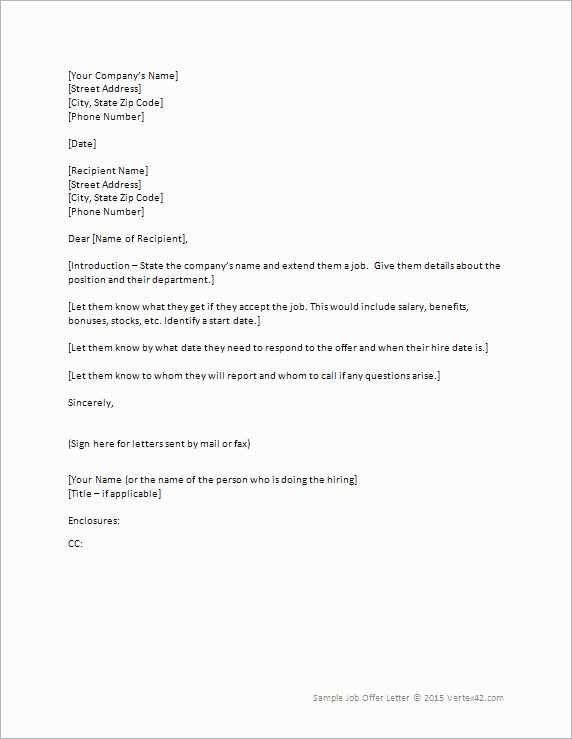
Clearly state the start date and work schedule to avoid confusion and ensure both parties are aligned on expectations.
- Start Date: Specify the exact date when the employee is expected to begin their role. For example, “Your employment will begin on [date].” This removes ambiguity and helps the new hire prepare accordingly.
- Work Schedule: Outline the days and hours the employee will work. If the schedule is fixed, state it directly: “You will work Monday to Friday from 9:00 AM to 5:00 PM.” If there is flexibility, mention it: “Your work schedule will be discussed with your manager upon starting.” This ensures clarity about working hours.
- Flexibility or Remote Work: If the position offers flexible hours or remote work, specify how that will be handled. For example: “You may work remotely on Mondays and Fridays, with in-office days Tuesday through Thursday.” Be clear about any expectations for remote work or flexibility.
By detailing the start date and work schedule in the offer letter, both the employer and the employee will have a clear understanding of the job’s expectations from day one. This sets the stage for a smooth onboarding process.
How to Present Salary, Benefits, and Compensation Information?
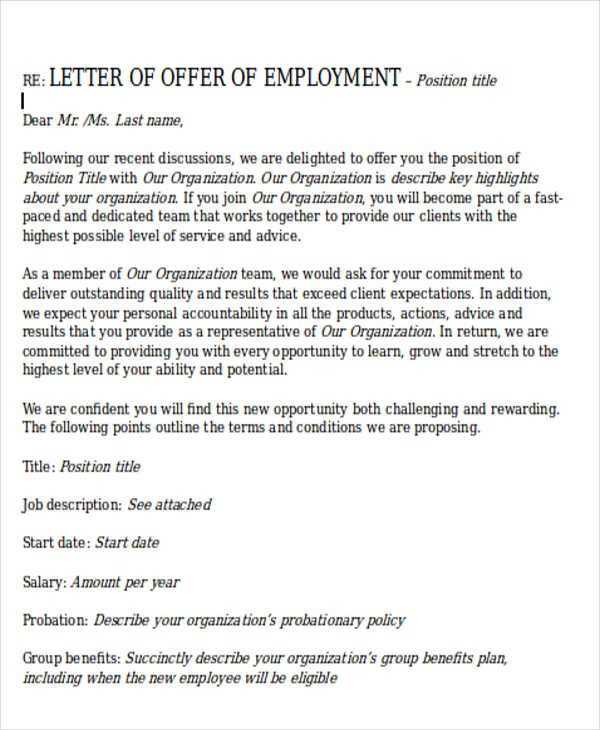
State the salary clearly in numeric terms, listing the base pay first, followed by any variable components like bonuses or commissions. Specify whether the salary is annual, monthly, or hourly, and clarify payment frequency (e.g., bi-weekly or monthly). If applicable, mention any sign-on bonuses or performance-based incentives. Include any salary review or increase schedule to manage expectations.
Benefits Breakdown
List the key benefits with precise details. If the company offers health insurance, include coverage types, premiums, and what the employee will need to pay. For retirement plans, specify the matching contributions or company percentage. If there are other benefits like life insurance, disability insurance, or employee stock options, be sure to include clear information on eligibility and how they work.
Additional Compensation
Outline other forms of compensation such as paid time off (PTO), sick leave, and holidays. Include policies on vacation accrual and whether unused time off rolls over. If remote work is an option or there are allowances for commuting, meals, or work tools, provide specifics. Make sure to mention any educational or professional development opportunities, including reimbursement for courses or certifications.
How to Close the Offer Letter with a Professional Invitation to Join?
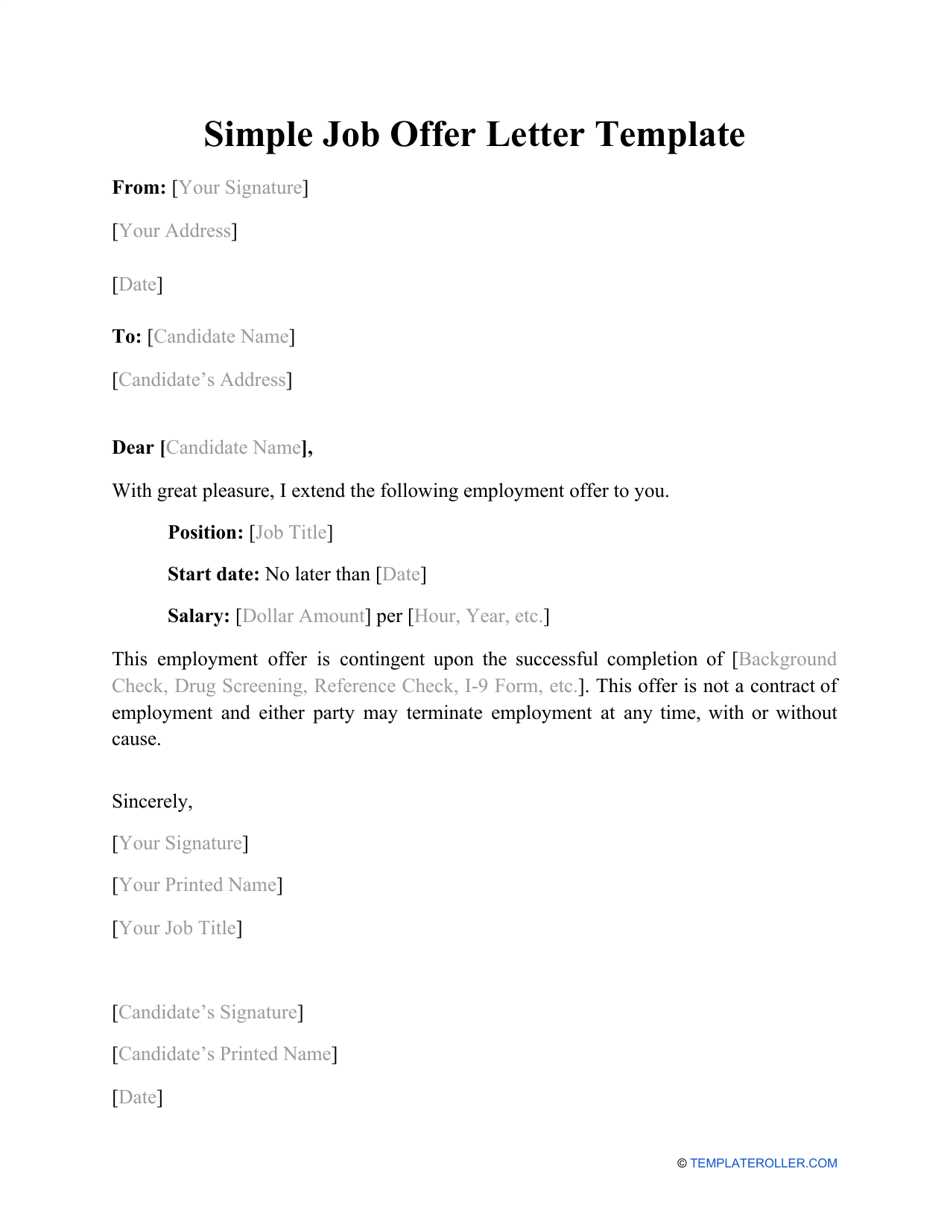
Conclude your offer letter with a clear, welcoming invitation that shows excitement about the candidate joining your team. Avoid overly formal language, but keep the tone professional and engaging.
Be Direct and Friendly
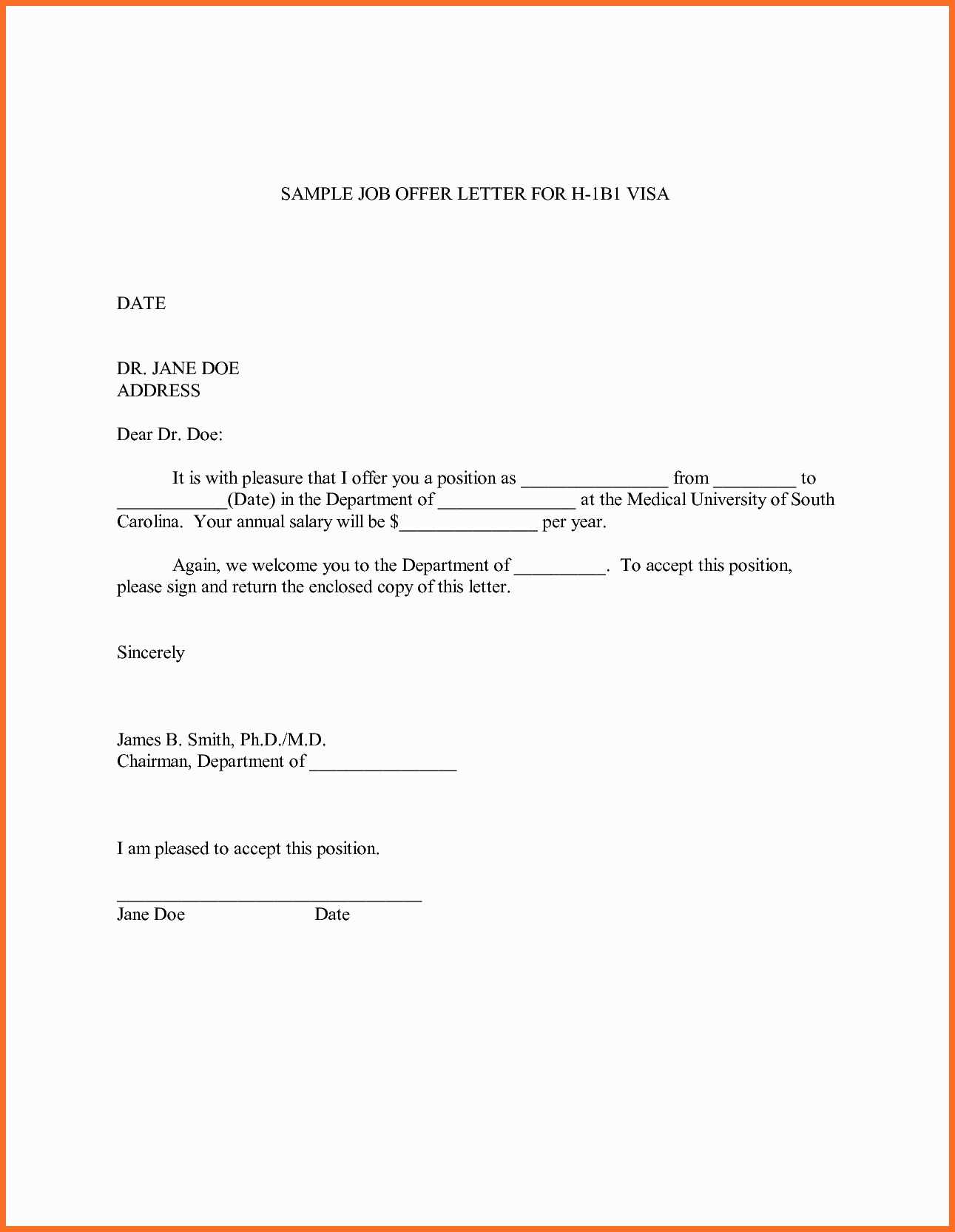
End with a direct statement of how excited you are for them to become part of the organization. A phrase like “We are thrilled to extend this opportunity for you to join us” can provide warmth while maintaining professionalism.
Provide a Simple Next Step
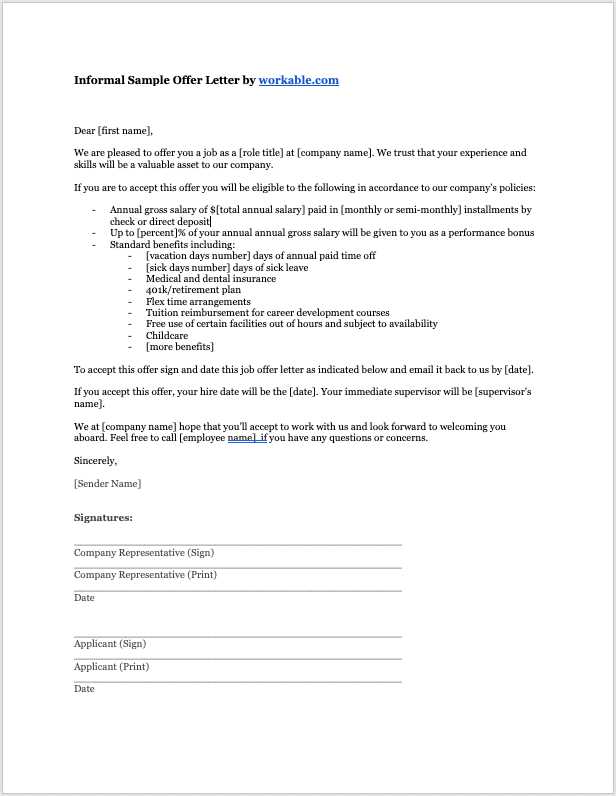
Offer clear instructions for the next step in the process. For instance, “Please sign and return the attached offer letter by [insert date]” or “We look forward to hearing from you by [insert date] to confirm your acceptance.” Make it easy for them to respond and finalize the process.
This helps the candidate feel welcomed and informed about what they need to do next without confusion or delay. A concise, friendly invitation leaves a lasting positive impression.